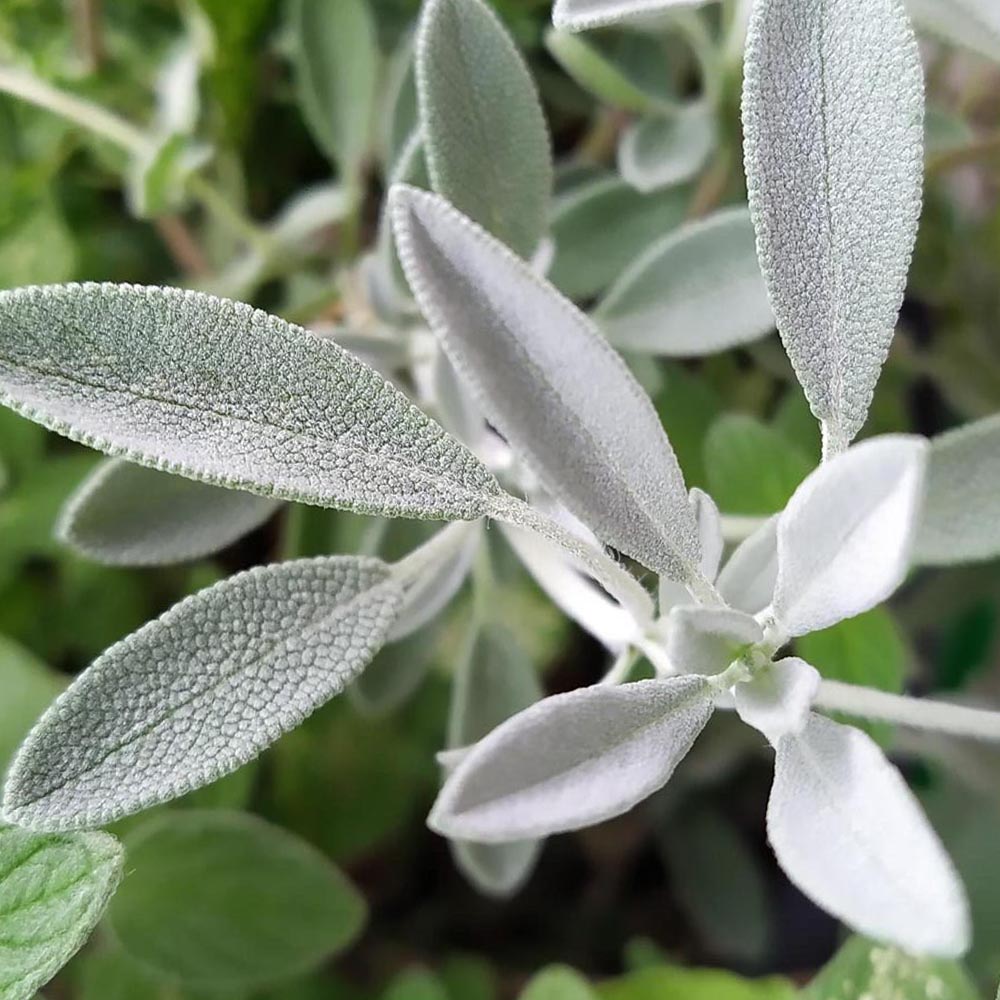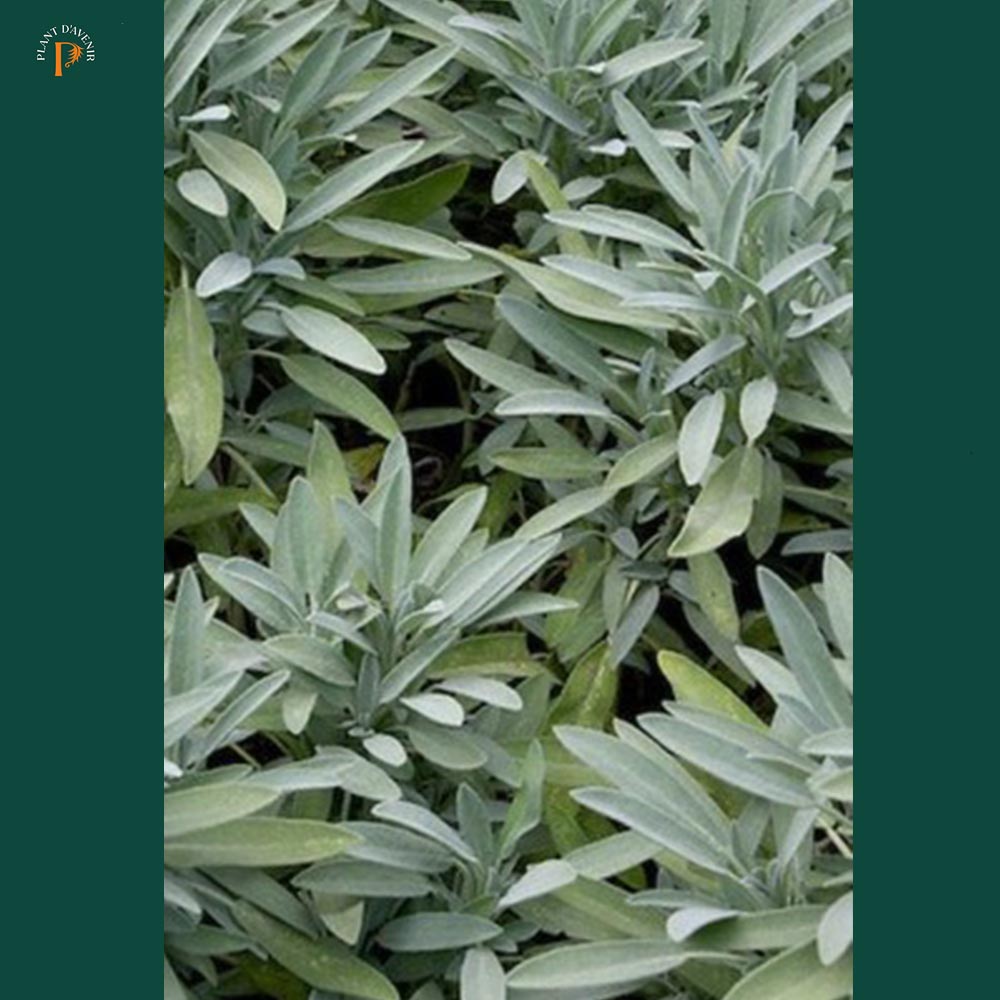No products in the cart.
Salvia officinalis subsp. lavandulifolia
A small woody perennial with lanceolate white green leaves that smell of rosemary and lavendar.
Rated 0 out of 5
0 customer reviews
4,90 € – 12,00 €Price range: 4,90 € through 12,00 €
Tags: aromatique, comestible, gris, perennial, potted plant, secheresse, soleil, vivace
SKU: pda270
Category: Balcony-Friendly, Bees and Butterflies, Bouquet, Culinary, Distillations, Evergreen, Fragrant, Frost Hardy, Grey Ladies, Ground Cover, Medicinal

Salvia officinalis subsp. lavandulifolia
4,90 € – 12,00 €Price range: 4,90 € through 12,00 €
Salvia officinalis subsp. lavandulifolia is a small perennial with lanceolate white green leaves that smell of rosemary and lavendar.
As a sage, it is particularly drought tolerant and sun-loving.
It has aromatic foliage that I use frequently either fresh or dried when I cook.
As a member of the mint family, it is highly attractive to bees and butterflies.
👨🌾GARDENING TIPS👨🌾::
Salvia really do not enjoy soggy roots so make sure that your windowbox/gardenbox/soil is well-draining.
The Tale:
Now this one is really interesting!
The essential oil of S. officinalis subsp. lavandulifolia has been found to have a selective acetylcholinesterase-inhibiting effect – which, if you are anything like me, you have no idea about.
Let’s learn together – the goal of treatment with acetylcholinesterase inhibitors is to improve or stabilize memory and attention by inhibiting the breakdown of acetylcholine, a neurotransmitter released by cholinergic neurons in the basal forebrain.
A basic example: cholinesterase inhibitors are used in the treatment of Alzheimer’s or dementia.
Read more here: Research on Memory
The binary name, officinalis, refers to the plant’s medicinal use—the officina was the traditional storeroom of a monastery where herbs and medicines were stored.
Additionally, for those color enthusiasts out there – the color sage comes from the color of the foliage of the common (is she common though?) sage.
The sage is sage.
Treated as a holy herb by the Romans, planted in monasteries under Charlemagne before becoming an indispensable herb of great renown during the Middle Ages.
A soap, a soup, a cleansing herb for the house and the mind, a toothpaste, an infusion that wards off the plague… whatever you needed, salvia would bring you your salvation.
Other Names:
Salvia lavandulifolia
Spanish sage
Origin:
Spain, Southern France
| Weight | 0,5 kg |
|---|---|
| Container Size | 9×9 cm, 2L |
| Flowering | June, July |
| Soil | Dry/Rocky |
| Exposure | Sun |
| Frost Tolerance | -20°C to -25°C |
| Size | Height: 0.8 |
Reviews
0
Rated 0 out of 5
0 customer reviews
5
0
4
0
3
0
2
0
1
0
Only logged in customers who have purchased this product may leave a review.
Related Products
Kalanchoe daigremontiana
A toothy succulent from Madagascar, known as the Mother of Thousands.
A toothy succulent from Madagascar, known as the Mother of Thousands.
Rated 0 out of 5
Tanacetum densum subsp amani
A shrublet composed of soft, finely divided silvery gray-white leaves.
A shrublet composed of soft, finely divided silvery gray-white leaves.
Rated 0 out of 5
Delosperma cooperi
A dwarf perennial known for its vermillion colored flowers
A dwarf perennial known for its vermillion colored flowers
Rated 0 out of 5
Vinca minor
Looping elegance and ability to form a low flowering ground cover
Looping elegance and ability to form a low flowering ground cover
Rated 0 out of 5
Mentha x piperita ‘Chartreuse’
A spicy mint, known for its use in the production of liqueurs and herbal teas.
A spicy mint, known for its use in the production of liqueurs and herbal teas.
Rated 0 out of 5
Echinacea purpurea
A perennial with purple flowers all summer long
A perennial with purple flowers all summer long
Rated 0 out of 5
Stachys byzantina
Silky white-grey leaves and tall striking flowers
Silky white-grey leaves and tall striking flowers
Rated 0 out of 5
Cerastium tomentosum var. columnae
A grey-green spreading ground cover from the mountains.
A grey-green spreading ground cover from the mountains.
Rated 0 out of 5
Artemisia Valerie Finnis
A semi-evergreen, aromatic variation on the theme of Artemisia.
A semi-evergreen, aromatic variation on the theme of Artemisia.
Rated 0 out of 5
Sedum album
A low, multi-color ground cover.
A low, multi-color ground cover.
Rated 0 out of 5
Euphorbia cyparissias Clarice Howard
A Euphorbia that resembles a soft little cyprus tree
A Euphorbia that resembles a soft little cyprus tree
Rated 0 out of 5
Euphorbia myrsinites
Known for its draping form of silver-gray foliage and radiant blooms.
Known for its draping form of silver-gray foliage and radiant blooms.
Rated 0 out of 5
Erigeron kavinskianus
A daisy-like carpet of flowers
A daisy-like carpet of flowers
Rated 0 out of 5
Glechoma hederacea
A sweet smelling ground cover, producing little blue flowers all summer long.
A sweet smelling ground cover, producing little blue flowers all summer long.
Rated 0 out of 5
Trachelospermum asiaticum ‘Ogon Nishiki’
Jasmine with colorful foliage and lovely white flowers in summer
Jasmine with colorful foliage and lovely white flowers in summer
Rated 0 out of 5
Hellebore argutifolius
Winter flowering perennial with marbled blue-green leaves
Winter flowering perennial with marbled blue-green leaves
Rated 0 out of 5
Melissa officinalis
A perennial plant in the mint family that is adored by bees, royal families and tea drinkers.
A perennial plant in the mint family that is adored by bees, royal families and tea drinkers.
Rated 0 out of 5
Tradescantia Blushing Bride
Gorgeous blushes of pink and white that appear in the coldest nights.
Gorgeous blushes of pink and white that appear in the coldest nights.
Rated 0 out of 5
recent view product
Stipa tenuifolia
A species of long, blonde, feathery grass.
A species of long, blonde, feathery grass.
Rated 0 out of 5
Ruta graveolens – Rue officinale
A highly fragrant, medicinal and striking grey-blue bush with yellow flowers.
A highly fragrant, medicinal and striking grey-blue bush with yellow flowers.
Rated 0 out of 5
Persicaria microcephala ‘Red Dragon’
A cultivar that dazzles with its deep purple foliage, bright red stems and light white flowers
A cultivar that dazzles with its deep purple foliage, bright red stems and light white flowers
Rated 0 out of 5
Crassula muscosa
A succulent with thin, spiralling square leaves
A succulent with thin, spiralling square leaves
Rated 0 out of 5
Echium russicum
A self-seeding flower with bright red spikes
A self-seeding flower with bright red spikes
Rated 0 out of 5

















































There are no reviews yet.